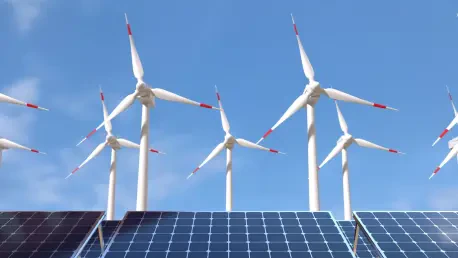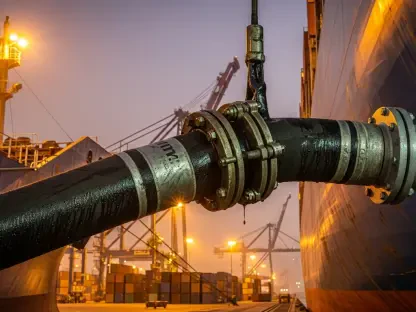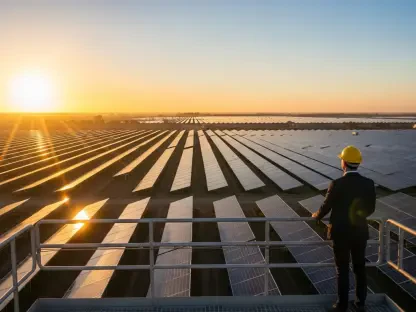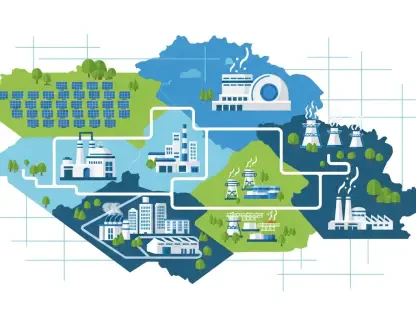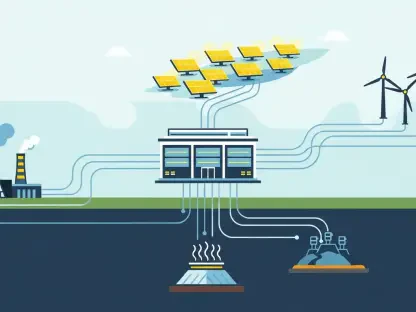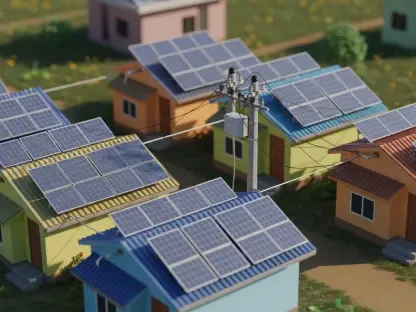The transformation of Serbia’s energy landscape represents a bold commitment to moving toward renewable sources, challenging its reliance on fossil fuels. This shift is exemplified by initiatives like the Petka solar power plant, which stands as a testament to Serbia’s ambitious energy goals. Such efforts illustrate a path toward sustainability, highlighting Serbia’s resolve to repurpose former coal sites into renewable hubs. With its significant milestones and aims, Serbia’s journey toward a 45% share of renewables by 2030 promises to alter its energy future drastically. This article will delve into Serbia’s current renewable energy state, expert insights, future implications, and concluding observations.
Serbia’s Renewable Energy Landscape
Growth and Adoption Trajectory
Serbia’s renewable energy sector exhibits a promising growth trajectory marked by significant developments and efforts to reduce fossil fuel dependency. The Petka solar power plant is a key milestone in this journey, marking the beginning of large-scale photovoltaic operations in the country. With a grid connection capacity of 10 MW, strategically constructed on a former coal tailings dump, it symbolizes Serbia’s commitment to environmental stewardship. According to Serbia’s Ministry of Mining and Energy, renewable energy production has been increasing steadily. Official data suggest that Serbia is on track to surpass its renewable energy targets, with a commitment to achieving a 45% renewables share by 2030, as outlined in its Energy Development Strategy.
Real-World Implementations and Projects
The transition toward renewable energy in Serbia is powerfully underscored by real-world projects transforming the country’s energy sites. The Petka solar power plant illustrates innovative repurposing, leading a wave of change through the Kostolac mining complex. Alongside this, the Kostolac wind park, with an expected capacity of 76 MW, is set to initiate grid connection and testing. These projects demonstrate how Serbia is transforming historical coal sites into renewable energy centers, highlighting a strategic environmental shift. Other initiatives like solar panels at the Termoelektrana Nikola Tesla A and photovoltaic systems at the Lazići dam showcase Serbia’s resolve to expand its renewable capabilities through transforming existing infrastructures.
Perspectives from Key Stakeholders
Government Insights
Critical insights into Serbia’s renewable energy transition come from government officials such as Minister Dubravka Đedović Handanović, who underscores the importance of advancing each megawatt toward enhanced energy security. She emphasizes that projects like the Petka solar power plant are not merely physical changes but are deeply symbolic of Serbia’s resolve to ensure a secure energy future. These initiatives contribute to the country’s broader decarbonization goals, positioning Serbia as a leader in sustainable energy development within the region.
Views from Industry Leaders
From the perspective of EPS CEO Dušan Živković, transitioning to renewable energy presents both challenges and opportunities. Živković highlights the potential benefits, such as meeting increased electricity demands during peak periods like hot summer days. He notes that green projects support EPS’s decarbonization efforts, ensuring resilience amid fluctuating energy demands. His views echo wider industry sentiments that underscore renewable projects as integral to sustainable energy development and diversification strategies.
Considerations for the Future
Ambitions for Renewable Capacity
Looking toward the future, Serbia’s renewable energy ambitions reveal a strategic vision for increased capacity, targeting hydro and solar power plant development. With plans like the 1 GW solar facilities equipped with battery storage and the Bistrica pumped-storage hydropower plant, Serbia aims to redefine its energy infrastructure significantly. These initiatives promise to deliver enhanced energy security and environmental benefits as Serbia progresses toward its 2030 renewable energy targets.
Challenges and Opportunities
Serbia’s renewable energy evolution confronts numerous challenges, including securing funding, advancing technology, and executing infrastructural changes. The projected EUR 14 billion investment over the decade indicates a massive commitment to this transformational path. However, opportunities abound in fostering a sustainable energy future, ensuring environmental benefits, and securing the power supply for Serbian citizens and industries. These factors contribute to an expected shift in the country’s energy sector dynamics.
Reflective Summary
Serbia’s endeavor to transition from coal to renewable energy is well underway, marked by notable projects and strategic developments. Initiatives such as the Petka solar power plant and the Kostolac wind park are reshaping the energy landscape through repurposed coal sites, setting valuable precedents. The impact of Serbia’s transition holds promise for energy security, environmental gains, and industry transformation. As the country navigates its renewable energy trajectory, continued stakeholder engagement and investment are likely to pave the way for a sustainable energy future, where Serbia stands as a regional exemplar in renewing its energy commitments.
